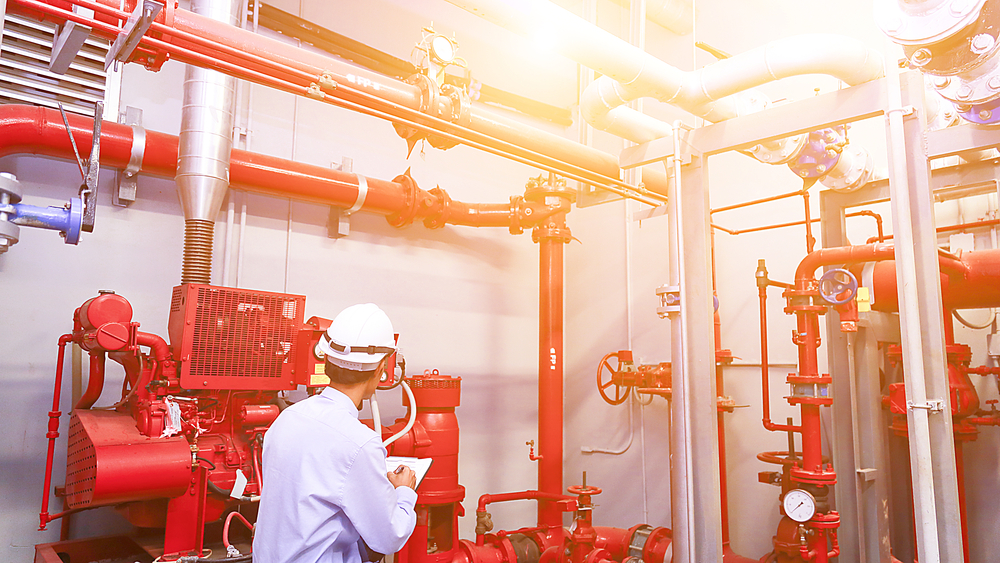Most people have a very limited outlook of fire protection systems. They consider nothing more than sprinkler systems and fire extinguishers as the only protection systems available to choose from. However, these two only form one category of fire protection systems.

Fire protection systems are classified into two broad categories: passive and active. You need both in your building because one cannot work effectively without the other.
What is active fire protection?
Active fire protection systems, often abbreviated as AFP, are those systems that require an action in order to protect against a fire hazard. This action can be manual or automatic. This means that both fire extinguishers and automatic sprinklers fall under AFP. The active fire protection systems will trigger when the occupants of the building or the computerized system are notified of a fire. The system will then be activated to keep the fire at bay and allow the occupants of the building to escape.
AFP not only incorporates fire suppression system but also fire detection systems. Both play an important role in protecting the occupants of a building against an active fire.
Fire detection systems work by initiating a predetermined response whenever signs of fire such as smoke, flames or heat are detected in the building. These fire detection systems will then turn on sprinklers, sound a fire alarm or alert the authorities of the fire hazard.
What is passive fire protection?
On the other hand, passive fire protection systems or PFP, don’t require any action to become effective against fire. Some good examples of PFP systems include fire-resistant walls, fire-resistant glass and heavy-duty doors. These elements have been designed to protect assets during fire emergencies and don’t require any action to be effective. They ensure that the fire burns out quickly by reducing the fuel available in the building.
Some building owners have invested in spray-applied fireproofing which is also a common passive fire protection system. There are other latest advancements in fire protection services that help to ensure the building is safe during a fire emergency. For instance, you can plot a fire route in your building which helps to direct fire crews to different parts of the building to put out the fire more quickly.
Why is it important to invest in passive and active fire protection systems?
Both passive and active fire protection systems are critical in a building because they are there for different purposes. The active systems like sprinklers and fire alarms will be activated immediately after detection whereas the passive protection systems will stop the fire from spreading and try to contain it in certain parts of the building.
Passive systems can give occupants of the building more time to escape and successfully evacuate. They can also help to minimize damage caused by the fire until the fire crew arrive. Don’t think of which system is better than the other and instead purpose to invest in both systems because they will offer you the protection you need to ensure everyone’s safety.





